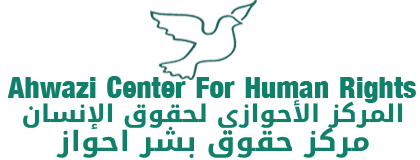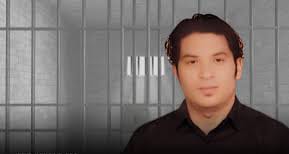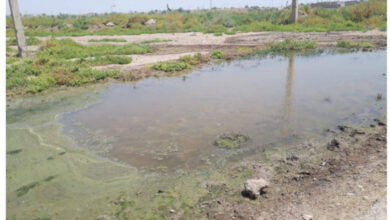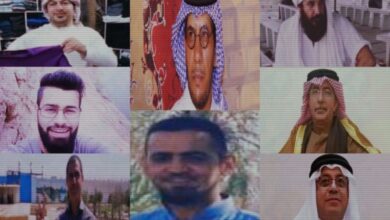Discrimination in Al-Ahwaz
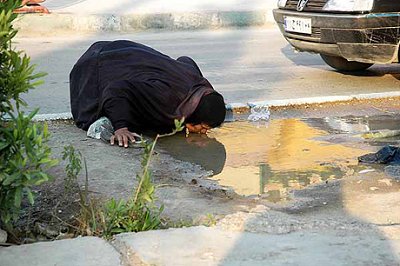
According to the article 2 of the universal declaration of Human Rights,
”everyone is entitled to all the rights and freedoms set forth in this declaration, without distinction of any kind, such as race, colour, sex, language, religion, political or other opinion, national or social origin, property, birth or other status. Furthermore, no distinction shall be made on the basis of the political, jurisdictional or international status of the country or territory to which a person belongs, whether it be independent, trust, non-self-governing or under any other limitation of sovereignty” (The Universal Declaration of Human Rights, 10th December 1948).
Owirka in 1989 defined discrimination ”as an unjust or prejudicial treatment between different groups of people through the lack of cognition and the lack of understanding, especially on the grounds of differences between race, religion, and culture between different groups”.
The discrimination in Ahwaz has been started since the occupation in 1925. Ahwazi people have been suffering from receiving equal social life such as jobs, sports, and other ordinary life; suffering from poor economy while majority of Iranian yearly income come from Al-Ahwaz, suffering from political harshness of the Iranian both regimes, the Iranian both regimes begun to change the demographic of the lands in Al-Ahwaz in based of racism ideology against Arab, many lands in Al-Ahwaz have been confiscated, the name of the places have been changed from Arabic name to the Persian, study in the mother tongue became forbidden for Ahwazi although article 2 of the universal declaration of Human Rights pointed out that all people are entitled to receive all the rights and freedoms without distinction of race, colour, sex, language, religion, political or other opinion.
Moreover, the discrimination in Ahwaz in the base of ethnicity and religion is clear for majority of Human Rights organisations, particularly for Ahwazi cultural, political and human rights activists who often arrested by the Iranian intelligence services. The policies of changing the demographic of Ahwaz land like moving Arabs from Ahwaz to other parts of Iran, and in another hand bringing non-Arab to Ahwaz is the most critical policy that Ahwazi faced due to the Iranian authorities policy system against Arabs. Therefore, the Iranian intelligence services usually use different ways to suppress the Ahwazi voices to not be published in the world.
Violations of human rights in Ahwaz have reached a serious stage, which caused many Ahwazi to flee from their lands to protect their lives, their families, and cultures from the Iranian harsh policies. For instance, all Iranian governmental intuitions, organisations, and the media works against Ahwazi history and culture to motivate non-Arab to move to Ahwaz in based of error declaration that Ahwaz is part of Iran and Arabs came from Saudi during the war between Islam and Iranian Persia.
The discrimination against Ahwazi has been rising up even in the sport like football and other clubs inside Ahwaz. For instance, Hussein Kaabi the Ahwaz-Iranian former football player, and Adel Hardani the former football player for both Foolad and Esteghlal Tehran, and the manager of Esteghlal Ahwaz stated that majority of the clubs in Ahwaz like Esteghalal begun to expulsion Arab players, and bring non-Arab like Lor to the clubs. The discrimination inside jobs is also rise up. For example, only between 1-2% of all staff in the oil companies made by Arabs although over 80% of Iranian income come from Al-Ahwaz (Al-Arabiya, 21 August 2014).
The insulation of Ahwazi Arabs have also been increased from all the governmental organisations in based of Iranian racism system in the Iranian state constitution. Arabs not allowed to study in their language, not allowed to know their history, not allowed to speech about their needy, not allowed to have NGOs to protect their cultures. Many Ahwazi journalists, activists, and businessmen have been arrested, and faced discrimination during the torture in the detention. Many Arabs were killed, many sent to live in exile, and many isolated from their society.
Having racism ideology against Arabs is not only include the Iranian system but even among Iranian poets and writers are visible. For instance, Ferdosi the Iranian historical poet had many poems against Arabs, current Iranian poets have made several poems against Arabs. Iranian cinema have also made several films against Arabs like Arose Atash film (bride in the faire) just to insult Ahwazi culture.
To conclude, there are several ways to put the Iranian authorities under pressure to decrease or abolish the discrimination against Ahwazi Arab people through the media, NGOs groups, governments condemnation reports and formal diplomats, United Nations pressure, through protest outside the Iranian embassies in the world, working with different organisations to show how Ahwazi are suffering from the Iranian ill-treatments. For example, the reports that published from Amnesty International, Human Rights Watch, UN, and many countries in the world against Iran, particularly after the Ahwazi protest in 2005, which Arab did protest against the letter that published by the vice president of Iran in 2005.
What is more, having contact with some organisations like ‘International Convention on the Elimination of All Forms of Racial Discrimination (1965)’; ‘International Convent on economic, social, and cultural Rights (1966)’ in the base of right to non-discrimination; ‘International Convention on civil and political rights (1966)’. Having also contact with UPR working group that review the state case every 41/2 years will be positive because new reports to this group will increase the pressure against the Iranian authorities to decrease or abolish their discrimination system against Ahwazi people.
By:Kamil Alboshoka
Ahwazi Centre for Human Rights
References
Social Science & Medicine, Volume 30, Issue 12, Pages 1273-1281
Nancy Krieger
Signals, Systems and Computers, 1989. Twenty-Third Asilomar Conference on (Volume:1 )
